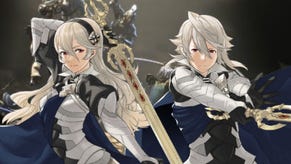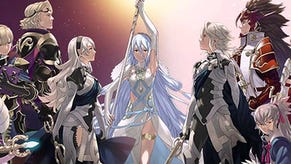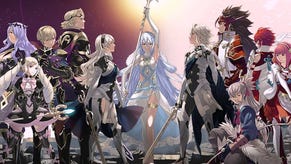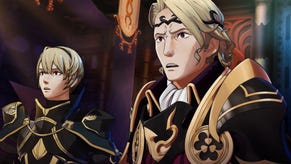Fire Emblem Fates: Conquest Nintendo 3DS Review: The Family You Choose
Intelligent Systems ramps up the difficulty in the other half of Fire Emblem Fates.
This article first appeared on USgamer, a partner publication of VG247. Some content, such as this article, has been migrated to VG247 for posterity after USgamer's closure - but it has not been edited or further vetted by the VG247 team.
When it came time to choose my path in Fire Emblem Fates, I hesitated for half a second. I had been assigned to Conquest, but my first inclination was to side with the Hoshido - the ostensible good guys. In the end, though, I held my nose and picked Nohr. I'm glad I did.
Conquest is the tough, old-school Fire Emblem that fans missed in its predecessor, Fire Emblem Awakening - a game that was widely praised, but also one of the easiest entries in the series. Conquest's maps are gauntlets that require careful planning to conquer without losing a character. And without random maps for experience point grinding, it's extremely difficult to over-level your party.
I'll admit that Conquest has been kind of kicking my ass, but in a way that's been refreshing. The latter portion of the game has some of the toughest maps that I've encountered in a Fire Emblem game to date. One of them has gusts of wind that blows enemies and heroes alike up and down the map, potentially separating out a weak character at a critical moment. Another is a race to the top of a mountain in which you must use Dragon Veins - hotspots that can change the map - to freeze enemies so you can sneak past.
Unlike Final Fantasy Tactics and its ilk, Fire Emblem has never been an especially deep tactics RPG - most of the min-maxing is found in picking a good class, pairing them up with the right character, and exploiting weaknesses via the rock-paper-scissors weapons triangle - so more pressure is put on the map design. Thankfully, Conquest steps up with a series of maps that make it very difficult to brute force your way through. Even a powerful hero like Xander - a horseback-riding Paladin with an insanely powerful sword - can be knocked out in relatively short order if you put him in a bad position.
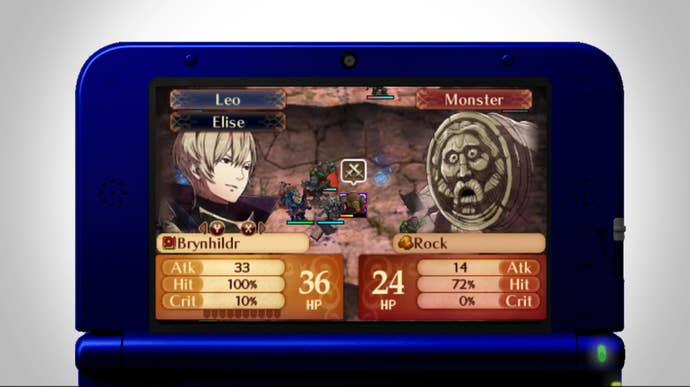
If this all sounds a little intimidating, keep in mind that I've been playing on Classic mode - Fire Emblem's traditional perma-death mode. If you're really only interested in playing through the story, you can always pick Casual mode, which will bring your party members back to life when a mission is done. There's also Phoenix mode - essentially a cheat code that will bring your characters back to life immediately. Frankly, I don't understand the point of that last mode; but if that's how you want to play Fire Emblem, then that's your business.
Whichever mode you choose, you're admittedly in for a middling story at best. Fire Emblem has always leaned on certain tropes - heroes questing for peace, ancient sorcerers, and corrupt rulers leading otherwise good-hearted kingdoms - and Conquest is more of the same. Choosing the Nohr route puts you under the command of a rather surprised King Garon, who responds by setting out to make your life hell.
In these cirumstances, the protagonist comes off as the tiniest bit naive as he or she openly questions Garon's actions and is repeatedly saved from major faux pas by their savvier siblings. If this were Game of Thrones, the protagonist would lose their head in the first five minutes. Subtlety has never been one of Fire Emblem's strong suits, though, and that's fine. The protagonist's naivete doesn't dimish the tension of trying to balance Garon's deranged orders without being forced to kill everyone or enter outright rebellion. In that regard, Conquest has just a bit more nuance to it than what I imagine is the more straight-forward Birthright.
In keeping with the tension with the protagonist and her chosen kingdom, the cast of Conquest skews a bit darker than Birthright's. Royals like Xander and Leo pride themselves on their nobility, but their army includes shady outlaws like Niles and Beruka, and outright psychopaths like Peri. Depending on your tastes, it can be a pretty entertaining mix, especially when you start pairing them and getting them to have kids - a feature that makes its return from Awakening.
Between battles, you retire to a private castle in another dimension - one of Fates' newer and more interesting features. Here you can run into party members, buy weapons from shops, bet on fights in an arena, and make temporary stat boosting dishes in a mess hall. After each battle, you're given one to two points to invest in either building or upgrading your infrastructure, which can make a big difference in how you progress.
The Smithy in particular stood out to me. Between missions, you can mine sapphires, which can then be used to combine two weapons into a more powerful version. This is very useful for characters who have just undergone a class change and are limited to the most basic weapons. With the Smithy, you can buy four weapons, combine them into two upgraded versions, then combine them one more time for a final high-powered weapon - very useful for a class that might otherwise be stuck with a Bronze Sword.

By and large, I think Fire Emblem's castle hub works really well. Even buildings like the seemingly useless Hot Springs - basically an excuse to see your favorite characters in a bikini - add a bit of color to the adventure. Most importantly, it gives you the opportunity to make some interesting decisions regarding what to upgrade next.
With that said, I suppose I would be remiss if I didn't mention that Nintendo has opted to cut one feature from the castle. When your protagonist builds up a strong enough relationship with a character on the field, they will get married and their partner will move in with them. Originally, this unlocked a series of minigames in which you interacted with your partner using the touchscreen. In the localized version, though, the minigames have been largely excised in favor of... well... nothing. You will get a quick first-person look at your partner, they'll say how devoted they are to you, and you'll earn a heart on a meter to no apparent effect. Honestly, I don't think it's a huge loss - the minigames are a bonus that don't seem to have any meaningful impact on the game as a whole - but I know that it's a notable omission for some.
The removal of the minigames mostly serve to highlight the tension between Fire Emblem's roots and where it is now. The series was originally conceived as a hardcore tactics RPG with an anime bent, with the Support mechanic being a fun footnote for the epilogue. Since Awakening, though, Fire Emblem has been putting more and more emphasis on character relationships as the series has first brought back children, and now introduced hot springs and petting mini-games. It's part of a bid to make the series more accessible to a broader audience; and if Awakening's success is any indication, it's been successful.
With Conquest, though, it appears that Intelligent Systems hasn't entirely forgotten what originally made Fire Emblem so great. Conquest's challenging maps and inability to grind XP are clearly aimed at the hardcore set, and they are very welcome. Add in new mechanics like the castle and Fire Emblem's traditionally excellent presentation, and the result is another high-quality tactics RPG from Intelligent Systems.
InterfaceFire Emblem Fates has an attractive interface that is easy to use, which is useful in light of the various systems at play.
Lasting AppealMost people will play Conquest once and move on to Birthright (or vice versa). However, there's replayability to be found in mixing and matching members of your roster and seeing which kids you get.
SoundConquest's soundtrack is generally understated; but when it needs to be, it can be very strong. I rarely played with the sound up, but that was more personal preference than a reflection of Conquest's quality
VisualsFire Emblem Fates is one of the best-looking games on the Nintendo 3DS. It cel-shaded cutscenes are particularly excellent.
ConclusionFire Emblem: Conquest is billed as the "hardcore" side of Fire Emblem Fates, and it doesn't disappoint with its intricate and challenging maps. On top of that, the core of Fire Emblem's relationship mechanics are strong as ever, and the castle hub is a very nice addition. Even if you opt to ignore Birthright, Conquest is a full-featured and satisfying RPG on its own.





